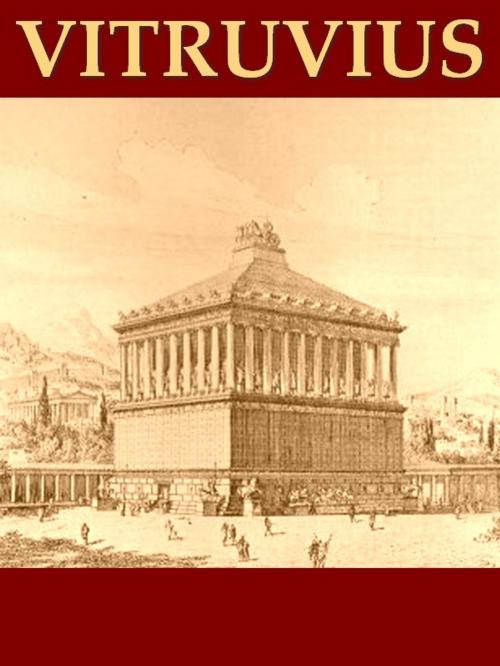An Abridgment of the Architecture of Vitruvius
Nonfiction, Science & Nature, Technology, Construction & Construction Trades, Home & Garden, The Home, Design & Construction, History, Ancient History, Rome| Author: | Marcus Vitruvius Pollio | ISBN: | 1230000173481 |
| Publisher: | VolumesOfValue | Publication: | September 6, 2013 |
| Imprint: | Language: | English |
| Author: | Marcus Vitruvius Pollio |
| ISBN: | 1230000173481 |
| Publisher: | VolumesOfValue |
| Publication: | September 6, 2013 |
| Imprint: | |
| Language: | English |
This edition features
• illustrations
• a linked Table of Contents
CONTENTS
The Introduction.
Article 1. OF the great merits of Vitruvius, and the Excellencies of his Works
Art. 2. Of the method of the Works of Vitruvius, with short Arguments of every Book
THE FIRST PART.
Of the Architecture that is common to us with the Ancients.
Chap. I. Of Architecture in general.
Art. 1. Of the Original of Architecture,
Art. 2. What Architecture is,
Art. 3. What the parts of Architecture are,
Chap. II. Of the Solidity of Buildings.
Art. 1. Of the choice of Materials,
Art. 2. Of the use of Materials,
Art. 3. Of the Foundation,
Art. 4. Of the Walls,
Art. 5. Of Flooring and Ceiling,
Art. 6. Of Plaistering
Chap. III. Of the Convenience of Fabricks.
Art. 1. Of convenient Scituation,
Art. 2. Of the Form and Scituation of the Building,
Art. 3. Of the Dispositions of Fabricks,
Art. 4. Of the convenient form of Buildings
Chap. IV. Of the Beauty of Buildings.
Art. 1. In what the beauty of Buildings consists
Art. 2. Of the five Genders, or sorts of Fabricks
Art. 3. Of the five Orders of Architecture
Art. 4. Of things that are common to several Orders
Art. 5. Of the Tuscane Order
Art. 6. Of the Dorick Order
Art. 7. Of the Ionick Order
Art. 8. Of the Corinthian Order
Art. 9. Of the Compound Order
THE SECOND PART,
Containing the Architecture that was particular to the Ancients.
Chap. I. Of publick Buildings.
Art. 1. Of Fortresses,
Art. 2. Of Temples,
Art. 3. Of publick Places, Basilica’s, Theatres, Gates, Baths, and Academies
Chap. II. Of Private Buildings.
Art. 1. Of the Courts of Houses,
Art. 2. Of the Vestibulum or Entry,
Art. 3. Of Halls,
Art. 4. Of the Distribution of the Apartments among the Ancients
Chap. III. Of things that equally appertain to Publick and Private Buildings.
Art. 1. Of Aqueducts,
Art. 2. Of Wells and Cisterns,
Art. 3. Of Machines for carrying and lifting up great Stones and Burthens,
Art. 4. Of Machines for elevating Waters,
Art. 5. Of Water-mills for grinding Corn,
Art. 6. Of other Hydraulick Machines,
Art. 7. Of Machines of War,
About the Author
"Marcus Vitruvius Pollio (born c. 80–70 BC, died after c. 15 BC) was a Roman author, architect, and engineer during the 1st century BC perhaps best known for his multi-volume work entitled De Architectura.
...
Mainly known for his writings, Vitruvius was himself an architect. In Roman times architecture was a broader subject than at present including the modern fields of architecture, construction management, construction engineering, chemical engineering, civil engineering, materials engineering, mechanical engineering, military engineering and urban planning. Frontinus mentions him in connection with the standard sizes of pipes. He is often credited as father of architectural acoustics for describing technique of echeas placement in theaters."--Wikipedia
P
This edition features
• illustrations
• a linked Table of Contents
CONTENTS
The Introduction.
Article 1. OF the great merits of Vitruvius, and the Excellencies of his Works
Art. 2. Of the method of the Works of Vitruvius, with short Arguments of every Book
THE FIRST PART.
Of the Architecture that is common to us with the Ancients.
Chap. I. Of Architecture in general.
Art. 1. Of the Original of Architecture,
Art. 2. What Architecture is,
Art. 3. What the parts of Architecture are,
Chap. II. Of the Solidity of Buildings.
Art. 1. Of the choice of Materials,
Art. 2. Of the use of Materials,
Art. 3. Of the Foundation,
Art. 4. Of the Walls,
Art. 5. Of Flooring and Ceiling,
Art. 6. Of Plaistering
Chap. III. Of the Convenience of Fabricks.
Art. 1. Of convenient Scituation,
Art. 2. Of the Form and Scituation of the Building,
Art. 3. Of the Dispositions of Fabricks,
Art. 4. Of the convenient form of Buildings
Chap. IV. Of the Beauty of Buildings.
Art. 1. In what the beauty of Buildings consists
Art. 2. Of the five Genders, or sorts of Fabricks
Art. 3. Of the five Orders of Architecture
Art. 4. Of things that are common to several Orders
Art. 5. Of the Tuscane Order
Art. 6. Of the Dorick Order
Art. 7. Of the Ionick Order
Art. 8. Of the Corinthian Order
Art. 9. Of the Compound Order
THE SECOND PART,
Containing the Architecture that was particular to the Ancients.
Chap. I. Of publick Buildings.
Art. 1. Of Fortresses,
Art. 2. Of Temples,
Art. 3. Of publick Places, Basilica’s, Theatres, Gates, Baths, and Academies
Chap. II. Of Private Buildings.
Art. 1. Of the Courts of Houses,
Art. 2. Of the Vestibulum or Entry,
Art. 3. Of Halls,
Art. 4. Of the Distribution of the Apartments among the Ancients
Chap. III. Of things that equally appertain to Publick and Private Buildings.
Art. 1. Of Aqueducts,
Art. 2. Of Wells and Cisterns,
Art. 3. Of Machines for carrying and lifting up great Stones and Burthens,
Art. 4. Of Machines for elevating Waters,
Art. 5. Of Water-mills for grinding Corn,
Art. 6. Of other Hydraulick Machines,
Art. 7. Of Machines of War,
About the Author
"Marcus Vitruvius Pollio (born c. 80–70 BC, died after c. 15 BC) was a Roman author, architect, and engineer during the 1st century BC perhaps best known for his multi-volume work entitled De Architectura.
...
Mainly known for his writings, Vitruvius was himself an architect. In Roman times architecture was a broader subject than at present including the modern fields of architecture, construction management, construction engineering, chemical engineering, civil engineering, materials engineering, mechanical engineering, military engineering and urban planning. Frontinus mentions him in connection with the standard sizes of pipes. He is often credited as father of architectural acoustics for describing technique of echeas placement in theaters."--Wikipedia
P















